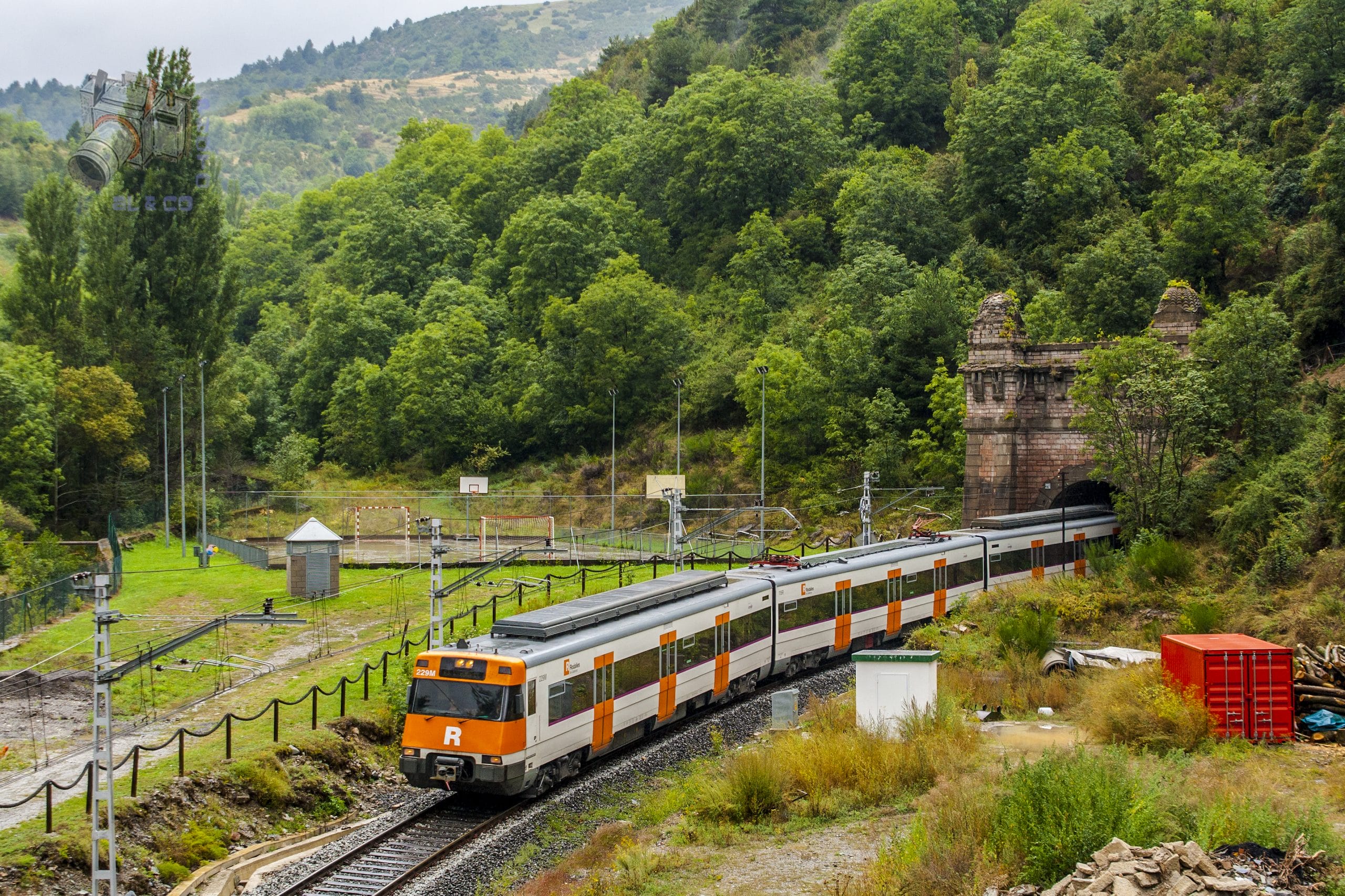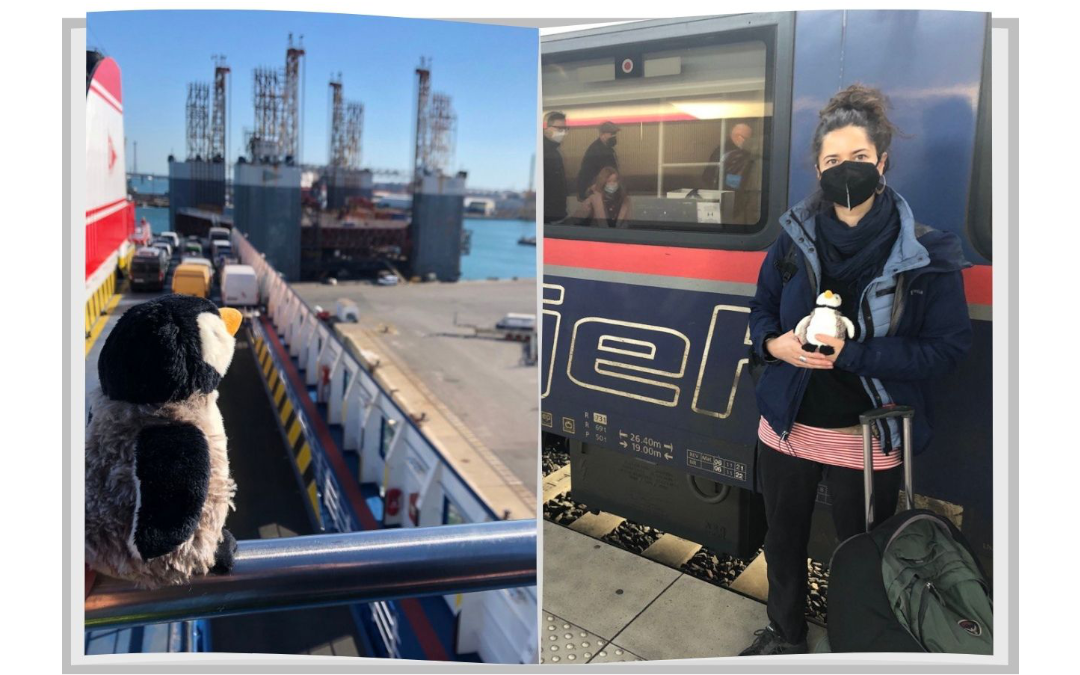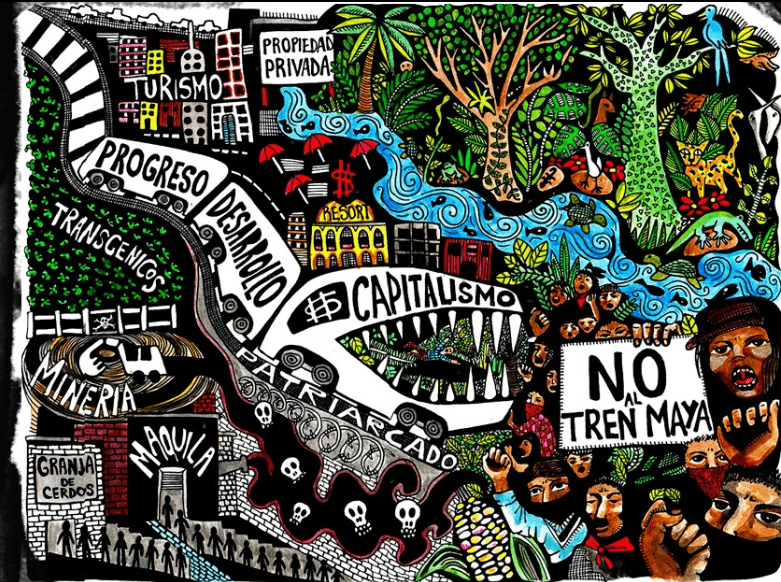The tourism and travel industries have created a destructive duo, one that jeopardises the way of life for local communities and destroys the environment to create profit for a few. But travel and leisure time could look so different if we recreate these systems with the majority of people in mind. As part of our strategy conference in Barcelona in July 2025 we created collective visions of what socially and climate just tourism and travel could look like. We heard from four speakers about projects that are already actively creating elements of these visions. Read about them below!
A quick note: Our visioning work at the conference showed us how much our dreams for a future world have in common. That said, the below projects are not ‘perfect’, there are things we’d critique but by looking at what works well they can help us identify how we might build our shared visions.
Co’ox Mayab
Defining this initiative based in the Yucatan peninsular, Mexico, is hard because it serves a number of purposes and each member and group within this project has their own definition. Broadly speaking it is a network or cooperative that supports community-based tourism. Community-based tourism is a model that aims to improve the living conditions of local communities by ensuring they have full responsibility for planning, running, and managing local tourism projects. For Co’ox Mayab, community-based tourism is important because: “for the cooperative’s members, it is a way to obtain complementary income without abandoning their daily activities, taking advantage of, preserving and revaluing the culture and natural resources of their environment.” They see it as an empowering approach for local communities.
Co’ox Mayab was established in response to difficulties groups were facing with their community-based tourism initiatives. Since then it has developed to have four main objectives:
- Strengthening the cooperatives to ensure they are stable.
- Supporting the commercial side of running the initiatives.
- Promoting community-based tourism to raise awareness of positive tourism practices.
- Providing governance to empower local communities and to impact public policies.
By coming together to face the material issues they faced the network has also become a political entity that raises awareness, advocates on behalf of members, and facilitates exchange and support.
Carla Izcara, a researcher at Alba Sud, who presented Co’ox Mayab for us at the conference, explains: “Co’ox Mayab is a community-based regional network with the capacity to scale up, in addition to having worked collectively for more than 10 years to improve living conditions and opportunities in rural areas of Yucatán through tourism. It has also become a key agent for political advocacy and a space for learning and hope for these communities, especially for their younger population.”
Generally a large number of the tourists they deal with arrive by plane from overseas, which contradicts one element of our utopian vision – that of a world based on fair, sustainable, grounded transport systems. The fact that some discussions have begun to take place about this issue shows a commitment to addressing structural issues.
The Núria Railway
The Vall de Núria in Catalonia, Spain, is a popular tourist destination with local communities. Located up in the Pyrenees, the Vall de Núria is only accessible by the Núria Railway (other than by hiking or by boat). The track was opened in 1931, prior to that the valley was only accessible by foot but the increase in pilgrims visiting the Sanctuary of Núria and the growth in popularity of winter sports prompted local authorities to build the railway. The train, which is already a low carbon mode of transport, is powered by solar electricity making it even more sustainable.
With the advent of industrialisation, we have increasingly lived in industrialised towns and cities which has made it harder for everyone to have easy access to nature. This has led to a rise in ‘nature tourism’, those from the wealthier parts of society seek experiences and leisure time in nature. This has put stress on rural places which were not prepared for this influx of people. In response new infrastructure has often been built, much of which is often built to facilitate more car travel. This is why the Núria train is notable. Being closed to cars reduces pollution and maintains the tranquillity of the valley, as well as slowing and managing the flow of people who are accessing it at any given time.
Another important element to note here is how much the train network serves the local community. The Vall de Núria is a popular destination with Catalonians and the train serves tourists coming from other parts of Catalonia as well as providing vital infrastructure for the local community who live in the area. This shows us what popular local tourism destinations could look like if well managed. This track helps create a balance between providing transport for local residents and facilitating tourists without leading to huge degradation of the local environment.
The Catalonian Rumbus
The Rumbus was launched in April 2024 and has proven a valuable service for local tourists to the Garrotxa Volcanic Zone. The aim of the bus was not just to provide tourist transport but also accessible transport for the local population. Rural areas are often impacted by the lack of accessible public transport and badly joined up services. At the end of 2023 it had provided more than 10,000 trips, exceeding expectations. Of those trips, a quarter of users were locals.
Raúl Valls, who presented the Rumbus for us at the conference, said: “The main idea behind Rumbus is to contribute to the preservation and ecological balance of protected natural areas by avoiding the environmental impact of overuse caused by private cars and providing a more democratic and accessible form of transport for the entire population, both local and foreign.”
Of course, buses are not as sustainable as trains and there is certainly room for that critique with this project. But viewed as a solution to the issue of car traffic it represents an improvement. The Rumbus has reduced traffic congestion and provided a valuable service for the local community.
Workers Assemblies
Empowered workers who can define their own work and working conditions are key to creating a climate and socially just society. Safe Landing was established as a community of aviation workers who care about the industry and the planet. As part of their work, they advocate for the instigation of sector-wide Workers Assemblies to ensure the democratic engagement of workers to shape the future of aviation. Workers Assemblies are a way of ensuring workers are the architects of the transition to a just-transport system.
You may have heard of Citizens Assemblies, well, Workers Assemblies follow this concept. Citizens Assemblies are a form of deliberative democracy where people can engage in informed, respectful, and open discussion about a given topic. Firstly, participants are given the chance to learn about the topic with presentations from experts, then they are given chance to discuss with others and form their own opinion, before finally coming to some conclusions. In this final stage consensus is important and individual voting can be used to ensure minority voices are included. In Workers Assemblies recommendations collected from this final stage could then be given to trade unions or policy makers.
Part of their strategy for getting Workers Assemblies implemented is to popularise assemblies at a grassroots level. By running Visioning Assemblies Safe Landing are able to raise awareness about the assembly process and give people experience in participating. For their latest Visioning Assembly over 80 aviation workers applied, of which 26 were selected to represent the diversity of job roles, gender, ethnicity, age, and views on climate that are present across the industry. They were taken through group exercises to reflect on power dynamics and their own role in creating change. In the final part they created a vision for the future of aviation which they then presented to the group for feedback with the final results being sent to politicians, industry leaders, and trade unions, and presented at political party conferences and events.
SailCoop
This cooperative aims to replace air traffic, motorboats, and ferries with sailing routes. SailCoop runs routes from Saint-Raphaël, France and Calvi, France to Corsica and a second from Concacarneau, France to Glénan Islands, France. In partnership with a ship-owner called NEOLINE they also run Transatlantic crossings running from Saint-Nazaire in France to Baltimore in the US. The France to US crossing takes 14 days with a 28-day roundtrip also being offered.
Being a cooperative, their ownership model offers an example of what community-owned transport could look like. Having been founded 12 years ago as a cooperative, there are now 3000 citizens who jointly own SailCoop. They work on a one person, one vote system meaning that everyone who has bought a share in Sailcoop has a say on key strategic questions, can participate in working groups, and can be involved in other decisions about the organisation. They are part-financed by citizen fundraising, having raised nearly 2 million this way. In the UK, Go-op is similarly creating a model of what transport – in this case rail – could look like if owned by workers and users.
Their goal is not just to provide low carbon transport but to support people in reinventing their relationship to travel, time and consumption by slowing down and enjoying the journey. Sailing is also a communal activity with people staying in close confinements, sharing the same communal space and experiencing something together. Life onboard the sailing boats also means living with the resources you have and being collaborative in how you use them, whether that’s food, water, or the energy you need to charge your phone.
One critique of this project could be to ask who it serves and whether it is designed with the majority of people in mind. At the same time, it provides a useful blueprint for what one element of a just transport system could look like.



